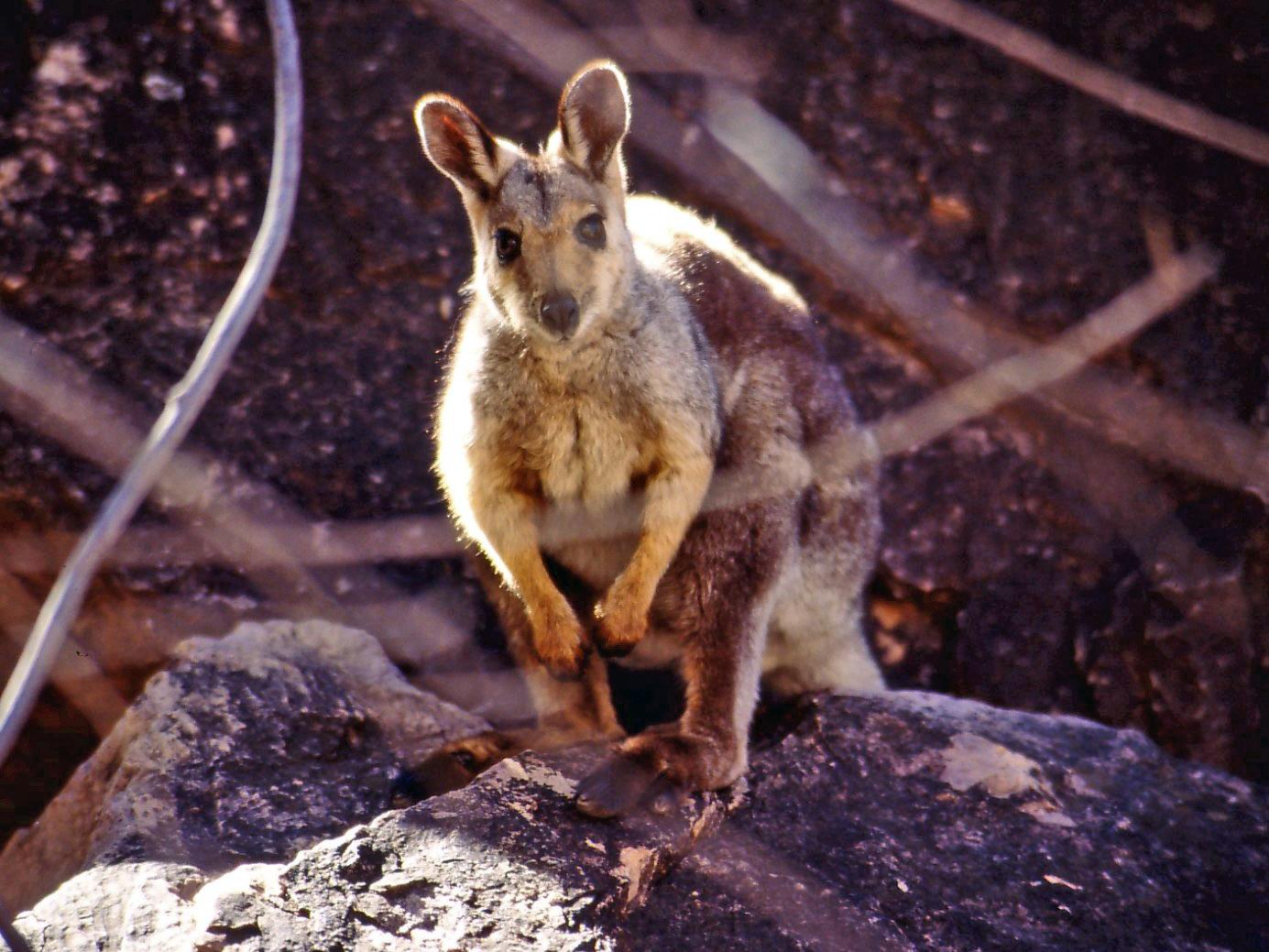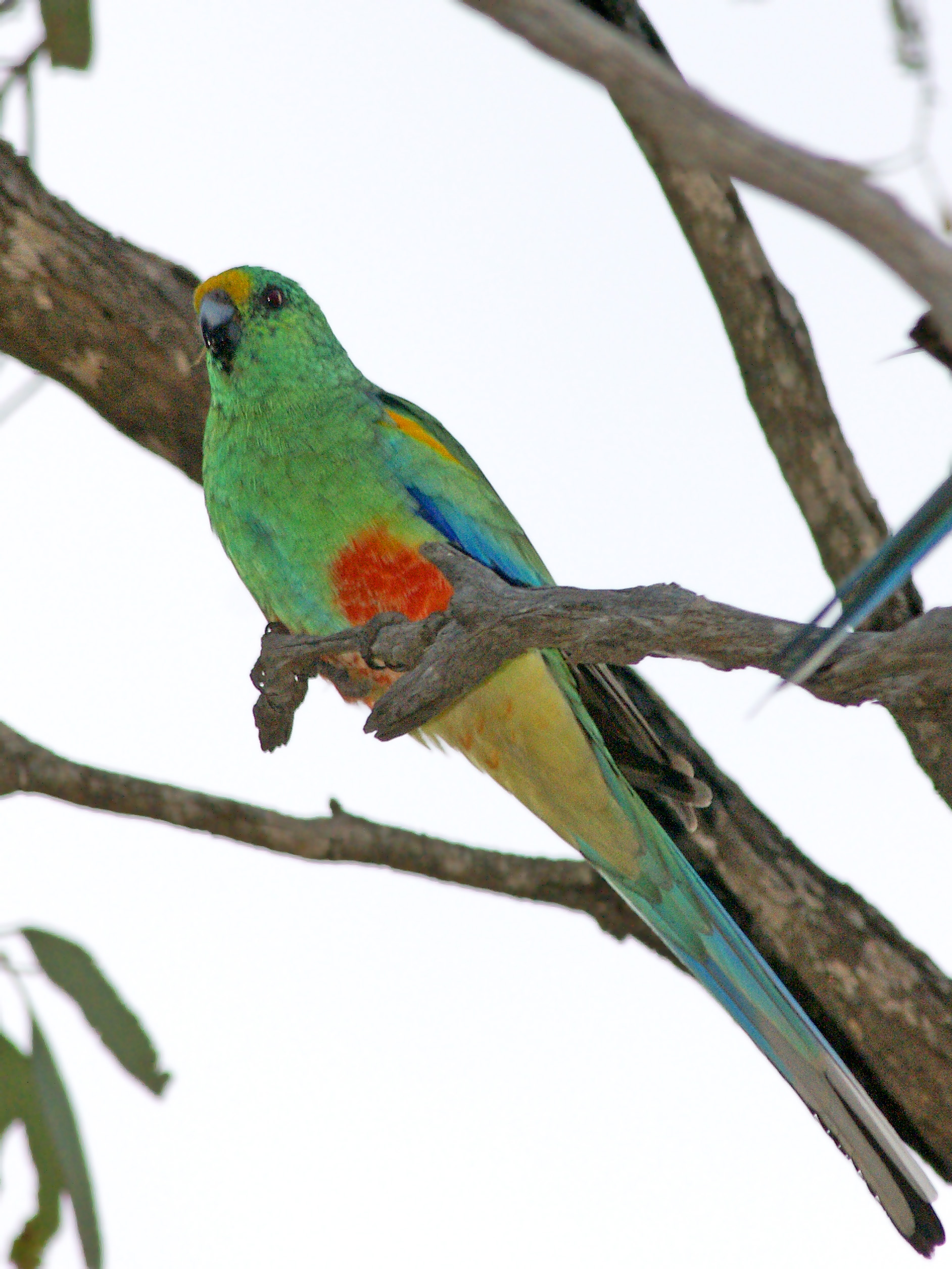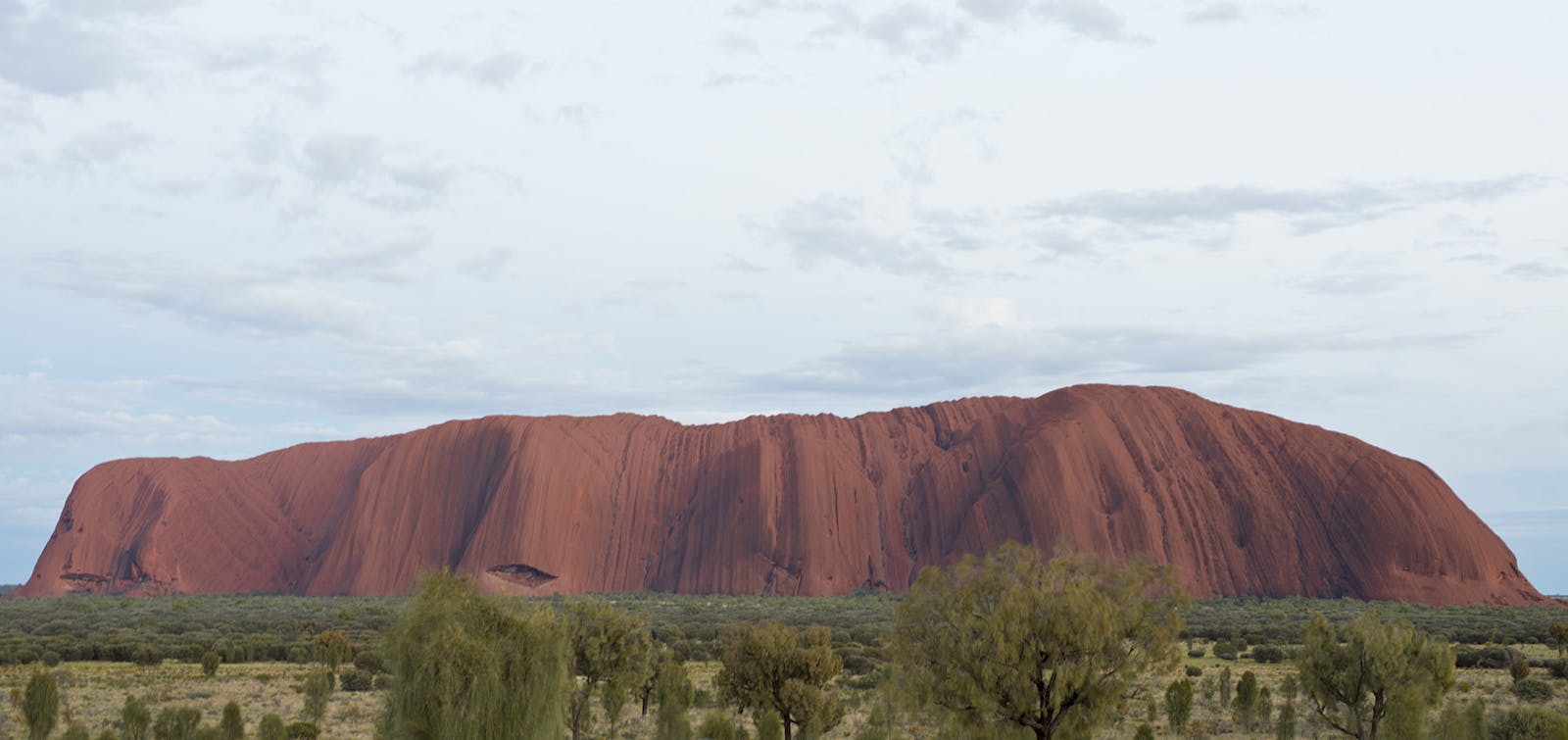Central Ranges Xeric Scrub
The ecoregion’s land area is provided in units of 1,000 hectares. The conservation target is the Global Safety Net (GSN1) area for the given ecoregion. The protection level indicates the percentage of the GSN goal that is currently protected on a scale of 0-10. N/A means data is not available at this time.
Bioregion: Greater Australian Interior Desert & Shrublands (AU7)
Realm: Australasia
Ecoregion Size (1000 ha):
28,867
Ecoregion ID:
208
Conservation Target:
82%
Protection Level:
4
States: Australia
When alarmed, the wary black-flanked rock-wallaby bounces quickly away across the red-soils of mulga (Acacia aneura) shrubland and grasslands of the Central Ranges at the heart of Australia. These dry scrubs are also home to red-tailed black cockatoos, dazzling mulga parrots, and green tree frogs adapted to the hot, dry climate. The xeric scrubs are perfect for lizards—in fact, this ecoregion has more species of lizards than anywhere else in the world. The spectacular sacred rock of Uluru is surrounded by the mulga and grasslands of this ecoregion.

The flagship species of the Central Ranges Xeric Scrub ecoregion is the black-flanked rock-wallaby. Image credit: Thomas Schoch, Creative Commons
The area is covered by thick, tough Spinifex grasslands with some wooded areas of myall and desert oak (Acacia coriacea). Over 870 plant species have been recorded here, making it a Centre of Plant Diversity in Australia. Endemic plants include the cabbage palms of Palm Valley in Finke Gorge National Park. Rare and threatened animals include the southern marsupial mole, black-footed rock-wallaby, mulgara, malleefowl, Australian bustard, great desert skink, striated grasswren, Australian bustard, and the Mount Illbilie mintbush. Spectacular desert invertebrates include the spiny katydid (Chlorobalius leucoviridis).

Mulga parrot. Image credit: David Cook Wildlife Photography, Creative Commons
Despite much of the ecoregion being remote and located in the ‘outback’, some habitats are still degraded by overgrazing of sheep and cattle. Overgrazing by cattle tends to result in trampling and disruption of fragile cryptogamic soils and waterholes. Invasive animals, such as fox and feral cats prey on native wildlife, and feral rabbits, horses, and camels damage vegetation,. Invasive plants include Athel pine (Tamarix aphylla) and mesquite (Prosopis spp.). Human-caused fires also threaten flammable vegetation. There are 3 documented threatened plant species, 20 threatened mammal species (7 are extinct), 2 threatened bird species, and 1 threatened reptile species.
-CC-2006.jpg)
Australia green tree frog. Image credit: Creative Commons
Despite more than 34% of the ecoregion being identified as protected areas, including the West MacDonnell National Park and the Finke George National Park, management is limited. The priority conservation actions for the next decade include: 1) control of invasive trees and buffel grass; 2) protect and restore some key wildlife waterholes and relatively intact soil communities through fencing-out of commercial and feral livestock; and 3) continue the extirpated mala reintroduction program in Uluru-Kata Tjuta National Park, working with Anangu from Mutitjulu community.
Citations
- Australian Government. 2008. Central Ranges bioregion. Accessed 1 June 2019 at https://www.environment.gov.au/system/files/resources/a8015c25-4aa2-4833-ad9c-e98d09e2ab52/files/bioregion-central-ranges.pdf.
- Government of South Australia. 2015. Central Ranges Bioregion plus bio icons facts. Accessed 1 June 2019 at https://www.environment.gov.au/system/files/...4aa2.../bioregion-central-ranges.pdf.
- Latz, PK, B Pitts. 1995. Central Australian Mountain Ranges. Pages 467–470 in SD Davis, VH Heywood, AC Hamilton. editors. Centres of Plant Diversity. Volume 2. Asia, Australasia, and the Pacific. WWF/IUCN, IUCN Publications Unit, Cambridge, UK.





